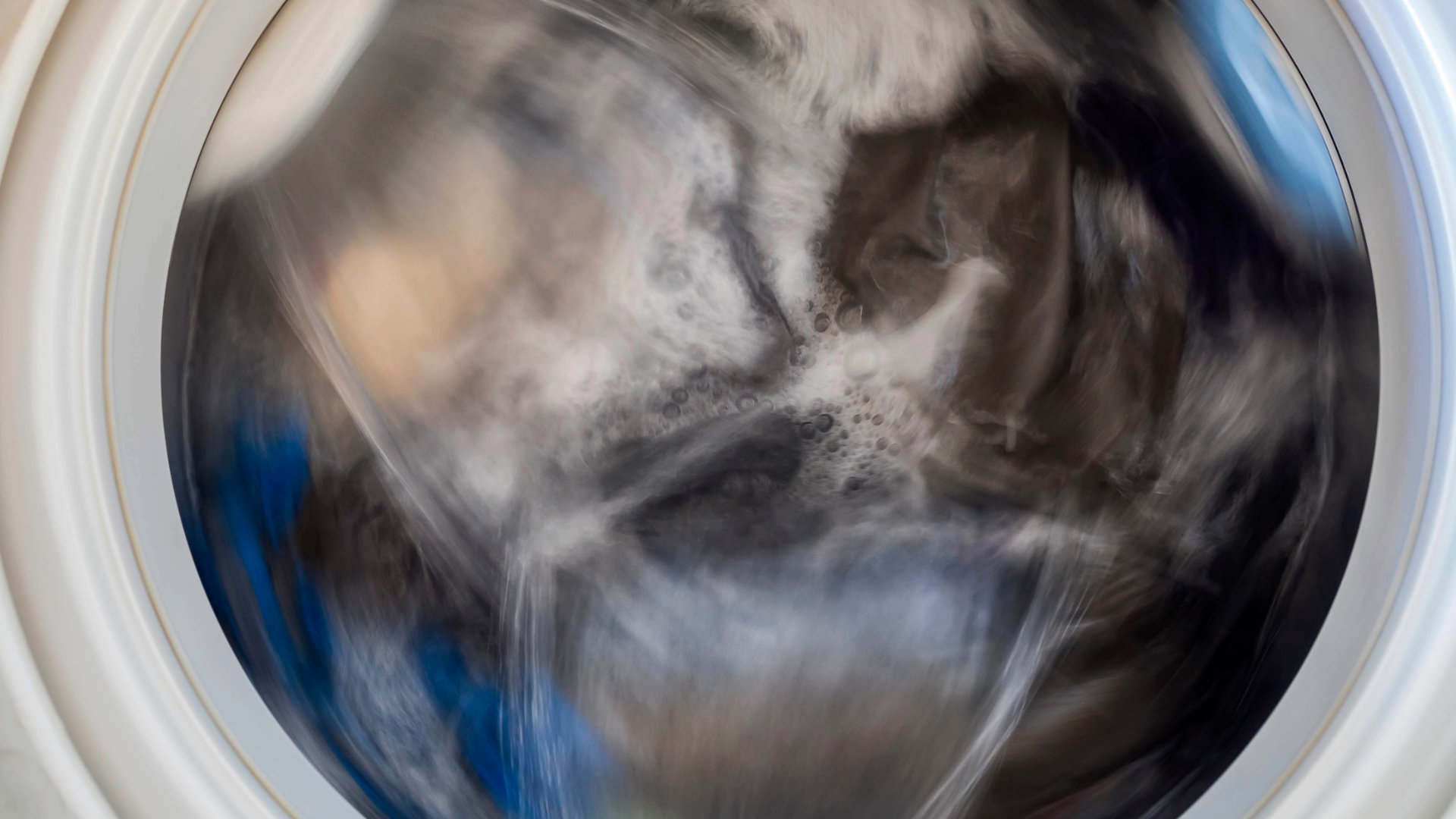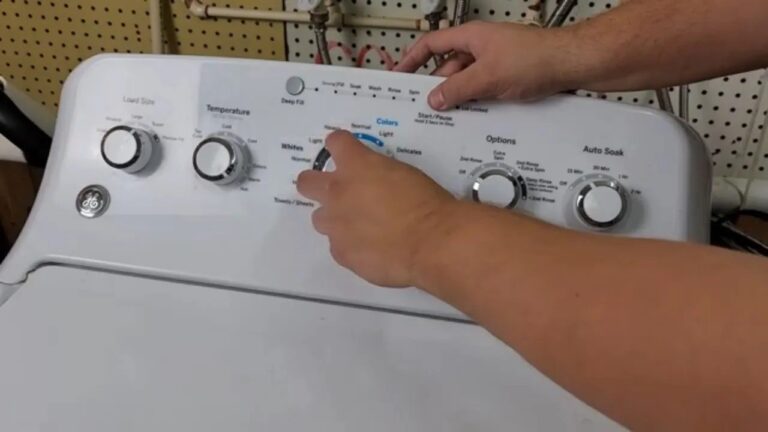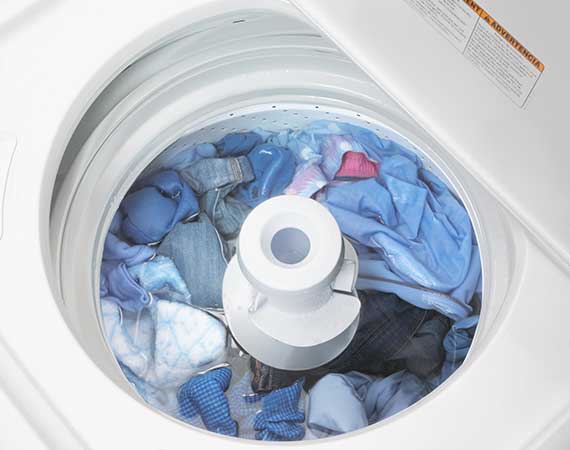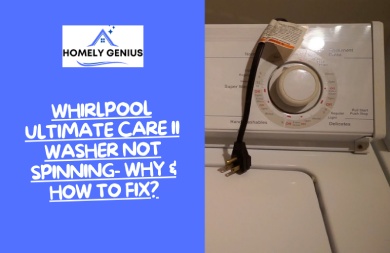GE Profile Washer Not Spinning: Troubleshooting Tips and Fixes

A GE Profile washer not spinning could be due to a faulty lid switch or a broken drive belt. Inspect these components to identify the issue.
A malfunctioning GE Profile washer can disrupt your laundry routine. Common problems include the washer not spinning, which can leave clothes soaking wet and unwashed. This issue often stems from a faulty lid switch, which ensures the washer lid is closed during operation, or a broken drive belt, crucial for drum rotation.
Checking and replacing these parts can usually resolve the problem. Regular maintenance can prevent such issues, ensuring your washer operates smoothly. Understanding these common faults can save time and money, helping you get your laundry done efficiently.

Credit: fleetappliance.com
Common Causes
When your GE Profile Washer stops spinning, it can be frustrating. Understanding the common causes can help you troubleshoot and fix the issue. Let’s explore some frequent reasons why your washer might not be spinning.
Lid Switch Issues
The lid switch is a crucial component. It ensures the washer’s lid is closed during operation. If the lid switch is faulty, the washer won’t spin.
Here are some indicators of a lid switch issue:
- The washer stops mid-cycle.
- You hear no clicking sound when the lid closes.
- The washer won’t start spinning at all.
To check the lid switch, follow these steps:
- Unplug the washer.
- Open the control panel.
- Locate the lid switch and test for continuity using a multimeter.
- If there’s no continuity, replace the switch.
Drive Belt Problems
The drive belt connects the motor to the drum. If the belt is broken or worn out, the washer won’t spin.
Signs of drive belt problems include:
- The washer makes a loud noise during spinning.
- The drum doesn’t move at all.
- Visible wear or damage on the belt.
To inspect and replace the drive belt, follow these steps:
- Unplug the washer.
- Remove the back panel of the washer.
- Locate the drive belt and inspect for damage.
- If damaged, replace it with a new belt.
Addressing these common issues can often resolve the spinning problem. Regular maintenance can also prevent future issues.
Initial Checks
If your GE Profile washer is not spinning, performing some initial checks can help. These checks can often resolve the problem without needing professional help.
Power Supply
The first step is to ensure your washer has power. Check if the washer is plugged in properly. Verify if the outlet is working by plugging in another device. If the outlet is faulty, reset the circuit breaker or replace the fuse.
Load Balance
An unbalanced load can prevent the washer from spinning. Open the washer and check the load. Ensure clothes are distributed evenly. If the load is too heavy, remove some items. Use the table below to understand the ideal load balance:
| Load Type | Ideal Weight | Comments |
|---|---|---|
| Light Load | Under 5 lbs | Perfect for small items |
| Medium Load | 5-10 lbs | Balanced for most washes |
| Heavy Load | Over 10 lbs | May cause imbalance |
Evenly spaced clothes help the washer spin properly. If you notice an imbalance, redistribute the items and try again.
Inspecting The Lid Switch
Experiencing issues with your GE Profile washer not spinning? The problem might lie with the lid switch. The lid switch ensures the washer’s lid is closed before it spins. A malfunctioning lid switch can prevent the washer from spinning.
Testing The Switch
First, unplug the washer for safety. Locate the lid switch, usually under the lid. Use a multimeter to test the switch. Set the multimeter to the continuity setting. Touch the probes to the switch terminals. If the multimeter beeps, the switch is fine. If not, the switch is faulty.
Replacing The Switch
If the switch is faulty, it needs replacement. Order a new switch compatible with your GE Profile washer. Follow these steps:
- Unplug the washer for safety.
- Remove the screws securing the lid switch.
- Disconnect the wiring harness from the switch.
- Install the new switch by connecting the wiring harness.
- Secure the new switch with screws.
- Plug in the washer and test the lid switch.
With a functioning lid switch, your washer should spin properly.
Drive Belt Examination
Dealing with a GE Profile Washer not spinning can be frustrating. One common issue is a worn drive belt. The drive belt connects the motor to the drum, enabling it to spin. Examining and replacing this belt can restore your washer’s functionality.
Signs Of Wear
Checking the drive belt for wear is crucial. Here are some signs:
- Cracks on the belt surface
- Fraying edges
- Loose fit around the pulleys
- Unusual noises during spin cycles
If you notice any of these signs, the belt likely needs replacing.
How To Replace
Replacing the drive belt is a simple process. Follow these steps:
- Unplug the washer from the power source.
- Remove the back panel of the washer.
- Locate the drive belt around the motor and drum pulleys.
- Slide the old belt off the pulleys.
- Position the new belt around the pulleys.
- Ensure the belt is tight and properly aligned.
- Reattach the back panel.
- Plug the washer back in and test the spin cycle.
Completing these steps should get your washer spinning again.
Motor And Pump Issues
Facing issues with your GE Profile washer not spinning? The problem might lie in the motor and pump. These components are crucial for the washer’s spinning function. Let’s dive into the potential issues with the motor and pump.
Motor Functionality
The motor powers the spinning of the washer drum. If the motor is faulty, the drum won’t spin. A common sign of a bad motor is a humming noise. This noise indicates the motor is trying to work but failing. Another sign is the washer drum not turning at all.
To diagnose motor issues, you can check the following:
- Inspect the motor for any visible damage.
- Check the motor’s wiring connections.
- Use a multimeter to test the motor’s continuity.
If the motor shows no continuity, it needs replacement.
Pump Blockages
The pump drains water from the washer. A blocked pump can stop the washer from spinning. Signs of a blocked pump include water not draining and strange noises.
To check for pump blockages, follow these steps:
- Turn off the washer and unplug it.
- Locate the pump, usually at the bottom.
- Disconnect the hoses attached to the pump.
- Inspect the pump for any debris or blockages.
- Remove any obstructions found.
After clearing the pump, reassemble the washer and test it.
| Issue | Signs | Solution |
|---|---|---|
| Motor Fault | Humming noise, drum not turning | Inspect, test with multimeter, replace if needed |
| Pump Blockage | Water not draining, strange noises | Clear blockages, reassemble washer |

Credit: www.ke8p.us
Control Board Problems
The control board in a GE Profile washer acts like the brain. It manages all the washer’s functions. Sometimes, this crucial part may fail, causing the washer to stop spinning. Understanding the signs of a faulty control board can save time and money.
Diagnosing Board Issues
Diagnosing control board issues is essential. Look for these signs:
- Washer not spinning
- Unresponsive buttons
- Error codes
- Washer stopping mid-cycle
To confirm a control board problem, perform a reset. Unplug the washer for 5 minutes. Plug it back in and start a cycle. If the issue persists, the control board may be faulty.
Replacement Process
Replacing a control board can restore your washer. Follow these steps:
- Unplug the washer from the power source.
- Remove the top panel using a screwdriver.
- Locate the control board, usually at the back.
- Disconnect the wires from the old board.
- Install the new control board.
- Reconnect the wires to the new board.
- Replace the top panel.
- Plug the washer back in and test.
Ensure all wires are securely connected. A loose wire can cause further issues. Always handle electronic components with care to avoid damage.
Maintenance Tips
Proper maintenance of your GE Profile Washer is essential. This ensures it runs smoothly and efficiently. Follow these maintenance tips to keep your washer in top condition.
Regular Cleaning
Regular cleaning prevents mold and buildup. This keeps your washer smelling fresh and working well.
- Wipe the drum and door seal after each use.
- Run a cleaning cycle once a month.
- Use a washer cleaner or a mix of vinegar and baking soda.
Load Management
Proper load management ensures your washer spins correctly. Avoid overloading and underloading.
- Distribute clothes evenly around the drum.
- Do not overload the washer; follow the manual’s guidelines.
- Balance large items with smaller ones for even weight distribution.
Here is a quick reference table for load management:
| Load Type | Recommended Weight |
|---|---|
| Small Load | 1-2 kg |
| Medium Load | 3-4 kg |
| Large Load | 5-6 kg |
Following these maintenance tips helps your washer last longer. It also prevents common issues like not spinning.
When To Call A Professional
If your GE Profile washer is not spinning, it’s frustrating. Sometimes, DIY fixes don’t work. That’s when calling a professional becomes necessary. A technician can help identify and fix the problem quickly.
Identifying Major Issues
Major issues are hard to fix on your own. These include:
- Broken motor
- Faulty lid switch
- Worn-out drive belt
If you notice these issues, it is best to call a professional. A broken motor can cause the washer to stop spinning. A faulty lid switch may prevent the washer from starting. A worn-out drive belt can slip off or break.
Finding A Reliable Technician
Finding a reliable technician can be challenging. Here are some tips:
- Check online reviews
- Ask for recommendations
- Verify certifications
Online reviews provide insights into a technician’s work quality. Recommendations from friends or family are valuable. Certifications ensure the technician is qualified. Make sure to choose someone with experience in GE Profile washers.
| Issue | When to Call a Professional |
|---|---|
| Broken Motor | If the washer doesn’t spin or make noise. |
| Faulty Lid Switch | If the washer doesn’t start. |
| Worn-out Drive Belt | If the washer drum doesn’t spin. |
Calling a professional can save time and prevent further damage. Ensure you hire a qualified technician for the best results.

Credit: m.youtube.com
Frequently Asked Questions
Why Is My Ge Washer Not Going Into The Spin Cycle?
Your GE washer might not spin due to an unbalanced load, a faulty lid switch, or a clogged drain pump.
How Do You Reset A Ge Washer That Won’t Spin?
To reset a GE washer that won’t spin, unplug it for one minute. Plug it back in, then lift and close the lid six times within 12 seconds.
What Would Cause Washer To Not Spin?
A washer might not spin due to a broken drive belt, faulty lid switch, or clogged drain pump. Check these components first.
Why Is The Drum Not Spinning On My Washing Machine?
The drum might not be spinning due to a broken belt, faulty motor, or a jammed object. Check for these issues.
Why Is My Ge Profile Washer Not Spinning?
A clogged drain pump or unbalanced load often causes spinning issues.
How Do I Reset My Ge Washer?
Unplug for 1 minute, then plug back in and restart.
Can A Clogged Drain Cause Spinning Issues?
Yes, a clogged drain can prevent the washer from spinning properly.
What Does An Unbalanced Load Mean?
An unbalanced load occurs when clothes are unevenly distributed in the drum.
Conclusion
Fixing a GE Profile washer that’s not spinning is essential for efficient laundry. Follow the steps mentioned above to troubleshoot the issue. Regular maintenance can prevent future problems. If issues persist, consult a professional. Keeping your washer in good condition ensures clean and fresh clothes every time.






![Kenmore Washer OE Code [Troubleshooting And Fixes]](https://homelygenius.com/wp-content/uploads/2023/12/Kenmore-Washer-OE-Code-768x499.webp)